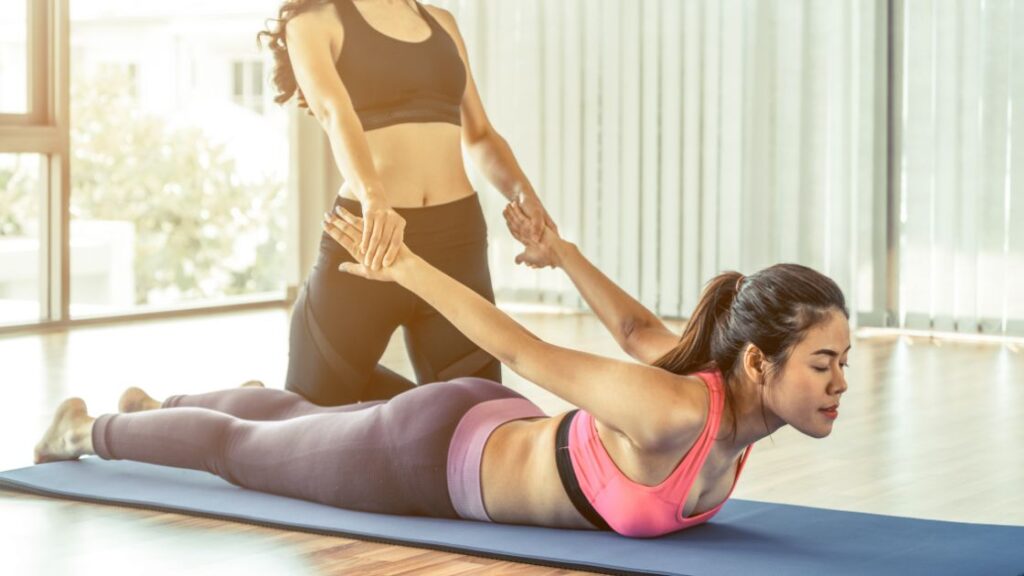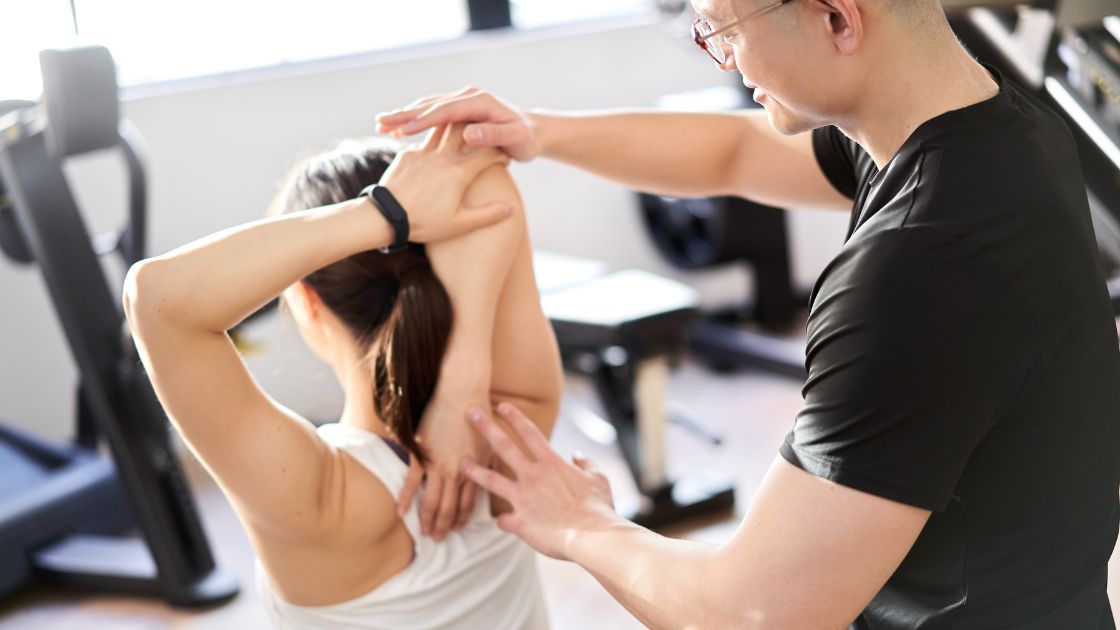Assisted Stretching: New 30-Minute Service!

Moyer Total Wellness is now offering assisted stretching! Our new 30-minute service is designed to:
- Improve muscular flexibility
- Increase joint range of motion
- Enhance physical performance
- Reduce risk of injury
- Improve posture
- Boost blood circulation
- Promote relaxation
Stretching on your own, of course, can provide these same benefits. But there are advantages to passive stretching that aren’t attainable with solo stretching. Why is that? How does the body respond differently to stretching when you let someone else do all the work?
Why You Should Try Assisted Stretching
Tailored to Your Unique Needs
No two patients are going to have identical needs, and that goes for any health related service. At your pre-consultation, your provider will assess which muscles and joints require the most attention. Are your shoulder joints more restricted than your knees? If so, you’ll receive extra care on and around your glenohumeral joint. Do you have more adhesions in your hamstrings than in your neck muscles? Then you’ll benefit more from stretches targeting the upper leg.
Sometimes we can determine our limitations on our own. Other times, we need a professional to pinpoint the root of our discomfort. You may come to the office reporting a stiff upper back and only wanting that area stretched – however, a tight upper trapezius is almost always associated with rolled-forward pecs, meaning the chest muscles are also in need of lengthening.
Guided with Proper Form
When the musculoskeletal system is restricted, we don’t always stretch with proper form. You may find it impossible to stretch a specific part of the body if it’s too locked up, and stretch improperly as a result. Improper form not only increases the risk of injury, but it targets a completely different muscle group than the one you intended. That seemingly immovable muscle needs considerably more help than the ones compensating for it.
With assisted stretching, you have a professional guiding your limbs through the motions. A bodyworker’s hold over the muscles prevents your joints from falling out of alignment, making sure the action associated with the targeted area is completed.
No Overstretching
There’s a common misconception that one has to hurt before one can heal. Whether that means overexerting yourself at the gym, recoiling during a deep tissue massage, or surpassing your comfort level when you stretch — “no pain, no gain” is a harmful myth.
Have you ever found yourself shaking or holding your breath while attempting a stretch? You likely have muscular adhesions in the spot you’re pulling, and they’re trying to tell you to stop! Locked-short muscles are at high risk for strains and tears. They can’t be forced into submission. Tugging a knot will only make it tighter.
Your therapist can gauge when you’ve reached full range of motion. During an assisted stretching session, your body should be relaxed – this modality is basically the lazy man’s yoga. If at any point your muscles begin to tense, the therapist will know where to stop the stretch.
Schedule Your First Assisted Stretching Session!*
Call 303-756-9355 to schedule an appointment with one of our talented massage therapists!
*Contraindications for Assisted Stretching
Stretching may not be appropriate if you experience any of the following:
- Recent bone fracture
- Pain with joint movement
- Active infection
- Acute joint inflammation
- Characterized by redness, swelling, or heat
- Hematomas
- Localized collection of blood outside blood vessels
- Joint hypermobility
- Bony blocks
- Structural abnormalities restricting joint range of motion

Katrina Jenkins
Author, Licensed Massage Therapist
Katrina Jenkins graduated from Towson University in 2013 with a Bachelor’s Degree in Health Science and worked as a nurse’s aide briefly before pursuing her true passion. She graduated from the Massage Therapy Institute of Colorado in April 2016 with honors and completed the Touch of Healers Scholarship Program the following summer. She has been a part of the Moyer Total Wellness Team since the summer of 2017.
Resources
Physiopedia (2023). Stretching. [online] Physiopedia. Available at: https://www.physio-pedia.com/Stretching.
Read, BSc, CPT, T. (2021). Stretch Therapy: Benefits, Risks, and How It Works. [online] Healthline. Available at: https://www.healthline.com/health/fitness/stretch-therapy.
Photo Credit
Canva by NanoStockk
Canva by kazuma seki

